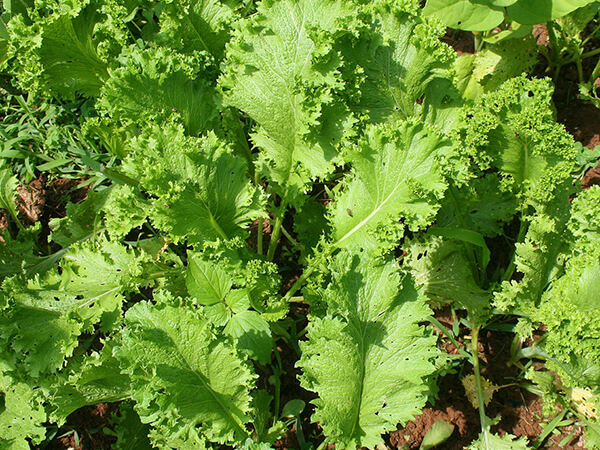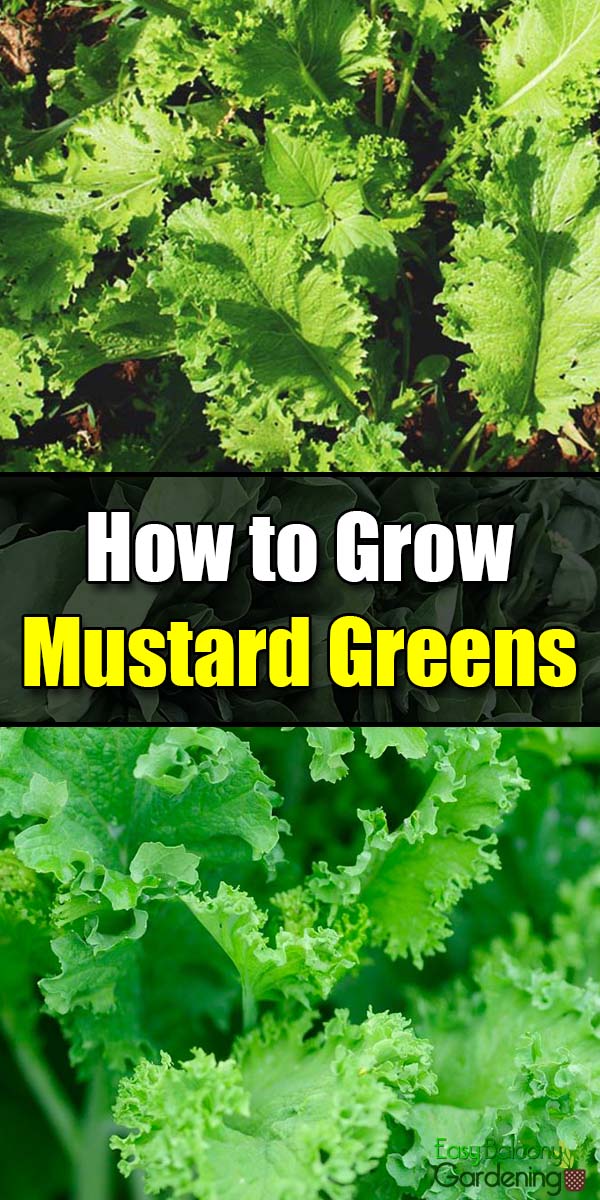Mustard greens are self-seeding and are fast growers. They are nutritious and easy to grow. Deadhead them or you can get overrun next planting season. They are best as fall or spring vegetables, and actually taste better when they are grown quickly and the leaves have matured before the hot summer days show up. Young leaves can be used in salads, whereas older leaves can be used in stirfries or simply steamed. Mustard greens are grown from seed.
Container Mustard Greens
Choose a container that is at least half a gallon capacity and has a depth of at least five to six inches. Use soilless potting mix and follow carefully the directions on the seed package. Allow about five inches between plants. It takes about 40 days from planting to harvest.
Growing Mustard Greens
- Choose a location that is in full sun, with partial shade, and with rich, well-drained soil. Work only with clean soil to avoid any soil-borne diseases. Recommended soil pH is 6.0-6.8.
- If you are planning on an early spring planting, prepare the seedbeds in the fall. Cultivate in raised beds or in rows. Work into the soil, about six inches deep, about three to four inches of well-rotted manure and other well-composted organic matter.
- Fall plantings are preferred as the mustard greens have a better quality when temperatures are cooler. Select the early maturing varieties.
- If spring planting, wait about two to three weeks before the last frost in your location,. Plant the seeds about one inch deep. Transplants or seedlings should be spaced about three inches between plants. The soil temperature should be at least 40ºF. Germination is in about seven to ten days.
- Thin to three inches apart between plants. Thinned plants are edible. If you can maintain some root system, the thinned plants can also be used as transplants, in which case you should leave about four to six mature leaves. After transplanting or thinning, apply half a cup of nitrogen based fertilizer (e.g., 21-0-0 fertilizer). Apply around the plants and irrigate into the soil.
- Keep as weed-free as possible. Mulching (grass clippings, shredded newspaper, straw, etc.) will help reduce weeds and conserve the moisture in the soil. The soil should be kept uniformly moist.
- Frequency of irrigation will depend on the type of soil and the temperature in your location. Avoid wetting the leaves to prevent fungus.
- Harvest the outer mustard greens as soon as new leaves begin pushing out from the plant’s center. You should harvest before the hot weather is upon you and, if at all possible, before the flower stalks develop. Hot summer temperatures will cause mustard greens to develop a bitter flavor.
Collecting the Seeds of Mustard Greens
To collect seeds, allow the pods to dry on the plant and break open. You can successfully store properly cleaned seeds. Trim away any tough, bug eaten or weather beaten leaves to promote faster growth of the new leaves from the center.
Mustard greens are easy to grow, and they are highly nutritious!








